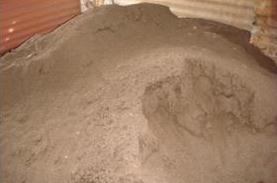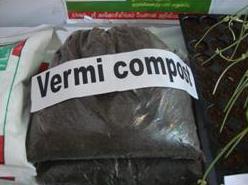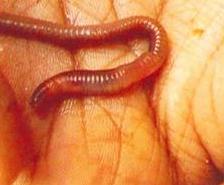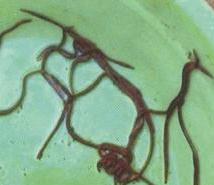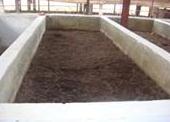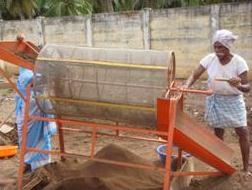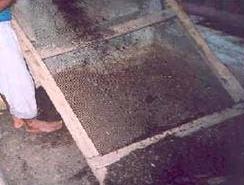 |
||||||||||||||||||||||||||||||||||||||||||||||||||||||||||||||||||||||||||||||||||||||||||||||||||||||||||||||||||||||||||||||||||||||||||||||||||||||||||||||||||||||||||||||||||||||||||||||||||||||||||||||||||||||||||||||
| Organic Farming :: Compost | ||||||||||||||||||||||||||||||||||||||||||||||||||||||||||||||||||||||||||||||||||||||||||||||||||||||||||||||||||||||||||||||||||||||||||||||||||||||||||||||||||||||||||||||||||||||||||||||||||||||||||||||||||||||||||||||
Vermicompost Earthworms have been on the Earth for over 20 million years. In this time they have faithfully done their part to keep the cycle of life continuously moving. Their purpose is simple but very important. They are nature’s way of recycling organic nutrients from dead tissues back to living organisms. Many have recognized the value of these worms. Ancient civilizations, including Greece and Egypt valued the role earthworms played in soil. The Egyptian Pharaoh, Cleopatra said, “Earthworms are sacred.” She recognized the important role the worms played in fertilizing the Nile Valley croplands after annual floods. Charles Darwin was intrigued by the worms and studied them for 39 years. Referring to an earthworm, Darwin said, “It may be doubted whether there are many other animals in the world which have played so important a part in the history of the world.” The earthworm is a natural resource of fertility and life. Earthworms live in the soil and feed on decaying organic material. After digestion, the undigested material moves through the alimentary canal of the earthworm, a thin layer of oil is deposited on the castings. This layer erodes over a period of 2 months. So although the plant nutrients are immediately available, they are slowly released to last longer. The process in the alimentary canal of the earthworm transforms organic waste to natural fertilizer. The chemical changes that organic wastes undergo include deodorizing and neutralizing. This means that the pH of the castings is 7 (neutral) and the castings are odorless. The worm castings also contain bacteria, so the process is continued in the soil, and microbiological activity is promoted.
Vermicomposting is the process of turning organic debris into worm castings. The worm castings are very important to the fertility of the soil. The castings contain high amounts of nitrogen, potassium, phosphorus, calcium, and magnesium. Castings contain: 5 times the available nitrogen, 7 times the available potash, and 1 ½ times more calcium than found in good topsoil. Several researchers have demonstrated that earthworm castings have excellent aeration, porosity, structure, drainage, and moisture-holding capacity. The content of the earthworm castings, along with the natural tillage by the worms burrowing action, enhances the permeability of water in the soil. Worm castings can hold close to nine times their weight in water. “Vermiconversion,” or using earthworms to convert waste into soil additives, has been done on a relatively small scale for some time. A recommended rate of vermicompost application is 15-20 percent. Vermicomposting is done on small and large scales. In the 1996 Summer Olympics in Sydney, Australia, the Australians used worms to take care of their tons and tons of waste.They then found that waste produced by the worms was could be very beneficial to their plants and soil. People in the U.S. have commercial vermicomposting facilities, where they raise worms and sell the castings that the worms produce. Then there are just people who own farms or even small gardens, and they may put earthworms into their compost heap, and then use that for fertilizer. Vermicompost and its utilization 2. Materials for preparation of Vermicompost Any types of biodegradable wastes-
Phase of vermicomposting
What Worms Need The Five Essentials
These five essentials are discussed in more detail below. Bedding Bedding is any material that provides the worms with a relatively stable habitat. This habitat must have the following characteristics: High absorbency Worms breathe through their skins and therefore must have a moist environment in which to live. If a worm’s skin dries out, it dies. The bedding must be able to absorb and retain water fairly well if the worms are to thrive. Good bulking potential If the material is too dense to begin with, or packs too tightly, then the flow of air is reduced or eliminated. Worms require oxygen to live, just as we do. Different materials affect the overall porosity of the bedding through a variety of factors, including the range of particle size and shape, the texture, and the strength and rigidity of its structure. The overall effect is referred to in this document as the material’s bulking potential. Low protein and/or nitrogen content (high Carbon: Nitrogen ratio) Although the worms do consume their bedding as it breaks down, it is very important that this be a slow process. High protein/nitrogen levels can result in rapid degradation and its associated heating, creating inhospitable, often fatal, conditions. Heating can occur safely in the food layers of the vermiculture or vermicomposting system, but not in the bedding. Requirements
3. Vermicompost Production Methodology i) Selection of suitable earthworm For vermicompost production, the surface dwelling earthworm alone should be used. The earthworm, which lives below the soil, is not suitable for vermicompost production. The African earthworm (Eudrillus engenial), Red worms (Eisenia foetida) and composting worm (Peronyx excavatus) are promising worms used for vermicompost production. All the three worms can be mixed together for vermicompost production. The African worm (Eudrillus eugenial) is preferred over other two types, because it produces higher production of vermicompost in short period of time and more young ones in the composting period.
ii) Selection of site for vermicompost production Vermicompost can be produced in any place with shade, high humidity and cool. Abandoned cattle shed or poultry shed or unused buildings can be used. If it is to be produced in open area, shady place is selected. A thatched roof may be provided to protect the process from direct sunlight and rain. The waste heaped for vermicompost production should be covered with moist gunny bags. iii) Containers for vermicompost production A cement tub may be constructed to a height of 2½ feet and a breadth of 3 feet. The length may be fixed to any level depending upon the size of the room. The bottom of the tub is made to slope like structure to drain the excess water from vermicompost unit. A small sump is necessary to collect the drain water. In another option over the hand floor, hollow blocks / bricks may be arranged in compartment to a height of one feet, breadth of 3 feet and length to a desired level to have quick harvest. In this method, moisture assessment will be very easy. No excess water will be drained. Vermicompost can also be prepared in wooden boxes, plastic buckets or in any containers with a drain hole at the bottom.
iv) Vermiculture bed Vermiculture bed or worm bed (3 cm) can be prepared by placing after saw dust or husk or coir waste or sugarcane trash in the bottom of tub / container. A layer of fine sand (3 cm) should be spread over the culture bed followed by a layer of garden soil (3 cm). All layers must be moistened with water. Common Bedding Materials
If available, shredded paper or cardboard makes an excellent bedding, particularly when combined with typical on-farm organic resources such as straw and hay. Organic producers, however, must be careful to ensure that such materials are not restricted under their organic certification standards. Paper or cardboard fibre collected in municipal waste programs cannot be approved for certification purposes. There may be cases, however, where fibre resources from specific generators could be sourced and approved. This must be considered on a case-by-case basis. Another material in this category is paper-mill sludge, which has the high absorbency and small particle size that so well complements the high C:N ratios and good bulking properties of straw, bark, shipped brush or wood shavings. Again, the sludge must be approved if the user has organic certification. In general, it should be noted by the reader that the selection of bedding materials is a key to successful vermiculture or vermicomposting. Worms can be enormously productive (and reproductive) if conditions are good; however, their efficiency drops off rapidly when their basic needs are not met (see discussion on moisture below). Good bedding mixtures are an essential element in meeting those needs. They provide protection from extremes in temperature, the necessary levels and consistency of moisture, and an adequate supply of oxygen. Fortunately, given their critical importance to the process, good bedding mixtures are generally not hard to come by on farms. The most difficult criterion to meet adequately is usually absorption, as most straws and even hay are not good at holding moisture. This can be easily addressed by mixing some aged or composted cattle or sheep manure with the straw. The result is somewhat similar in its bedding characteristics to aged horse manure. Mixing beddings need not be an onerous process; it can be done by hand with a pitchfork (small operations), with a tractor bucket (larger operations), or, if one is available, with an agricultural feed mixer. Please note that the latter would only be appropriate for large commercial vermicomposting operations where high efficiency levels and consistent product quality is required. v) Worm Food Compost worms are big eaters. Under ideal conditions, they are able to consume in excess of their body weight each day, although the general rule-of-thumb is ½ of their body weight per day. They will eat almost anything organic (that is, of plant or animal origin), but they definitely prefer some foods to others. Manures are the most commonly used worm feedstock, with dairy and beef manures generally considered the best natural food for Eisenia, with the possible exception of rabbit manure. The former, being more often available in large quantities, is the feed most often used. Common Worm Feed Stocks
vi) Selection for vermicompost production Cattle dung (except pig, poultry and goat), farm wastes, crop residues, vegetable market waste, flower market waste, agro industrial waste, fruit market waste and all other bio degradable waste are suitable for vermicompost production. The cattle dung should be dried in open sunlight before used for vermicompost production. All other waste should be predigested with cow dung for twenty days before put into vermibed for composting. vii) Putting the waste in the container The predigested waste material should be mud with 30% cattle dung either by weight or volume. The mixed waste is placed into the tub / container upto brim. The moisture level should be maintained at 60%. Over this material, the selected earthworm is placed uniformly. For one-meter length, one-meter breadth and 0.5-meter height, 1 kg of worm (1000 Nos.) is required. There is no necessity that earthworm should be put inside the waste. Earthworm will move inside on its own. viii) Watering the vermibed Daily watering is not required for vermibed. But 60% moisture should be maintained throughout the period. If necessity arises, water should be sprinkled over the bed rather than pouring the water. Watering should be stopped before the harvest of vermicompost. ix) Harvesting vermicompost In the tub method of composting, the castings formed on the top layer are collected periodically. The collection may be carried out once in a week. With hand the casting will be scooped out and put in a shady place as heap like structure. The harvesting of casting should be limited up to earthworm presence on top layer. This periodical harvesting is necessary for free flow and retain the compost quality. Other wise the finished compost get compacted when watering is done. In small bed type of vermicomposting method, periodical harvesting is not required. Since the height of the waste material heaped is around 1 foot, the produced vermicompost will be harvested after the process is over.
x) Harvesting earthworm After the vermicompost production, the earthworm present in the tub / small bed may be harvested by trapping method. In the vermibed, before harvesting the compost, small, fresh cow dung ball is made and inserted inside the bed in five or six places. After 24 hours, the cow dung ball is removed. All the worms will be adhered into the ball. Putting the cow dung ball in a bucket of water will separate this adhered worm. The collected worms will be used for next batch of composting. Worm harvesting is usually carried out in order to sell the worms, rather than to start new worm beds. Expanding the operation (new beds) can be accomplished by splitting the beds that is, removing a portion of the bed to start a new one and replacing the material with new bedding and feed. When worms are sold, however, they are usually separated, weighed, and then transported in a relatively sterile medium, such as peat moss. To accomplish this, the worms must first be separated from the bedding and vermicompost. There are three basic categories of methods used by growers to harvest worms: manual, migration, and mechanical. Each of these is described in more detail in the sections that follow. a) Manual Methods Manual methods are the ones used by hobbyists and smaller-scale growers, particularly those who sell worms to the home-vermicomposting or bait market. In essence, manual harvesting involves hand-sorting, or picking the worms directly from the compost by hand. This process can be facilitated by taking advantage of the fact that worms avoid light. If material containing worms is dumped in a pile on a flat surface with a light above, the worms will quickly dive below the surface. The harvester can then remove a layer of compost, stopping when worms become visible again. This process is repeated several times until there is nothing left on the table except a huddled mass of worms under a thin covering of compost. These worms can then be quickly scooped into a container, weighed, and prepared for delivery. There are several minor variations and/or enhancements on this method, such as using a container instead of a flat surface, or making several piles at once, so that the person harvesting can move from one to another, returning to the first one in time to remove the next layer of compost. They are all labour-intensive, however, and only make sense if the operation is small and the value of the worms is high. b) Self-Harvesting (Migration) Methods These methods, like some of the methods used in vermicomposting, are based on the worms tendency to migrate to new regions, either to find new food or to avoid undesirable conditions, such as dryness or light. Unlike the manual methods described above, however, they often make use of simple mechanisms, such as screens or onion bags. The screen method is very common and easy to use. A box is constructed with a screen bottom. The mesh is usually ¼”, although 1/8” can be used as wel. There are two different approaches. The downward-migration system is similar to the manual system, in that the worms are forced downward by strong light. The difference with the screen system is that the worms go down through the screen into a prepared, pre-weighed container of moist peat moss. Once the worms have all gone through, the compost in the box is removed and a new batch of worm-rich compost is put in. The process is repeated until the box with the peat moss has reached the desired weight. Like the manual method, this system can be set up in a number of locations at once, so that the worm harvester can move from one box to the next, with no time wasted waiting for the worms to migrate. The upward-migration system is similar, except that the box with the mesh bottom is placed directly on the worm bed. It has been filled with a few centimeters of damp peat moss and then sprinkled with a food attractive to worms, such as chicken mash, coffee grounds, or fresh cattle manure. The box is removed and weighed after visual inspection indicates that sufficient worms have moved up into the material. This system is used extensively in Cuba, with the difference that large onion bags are used instead of boxes. The advantage of this system is that the worm beds are not disturbed. The main disadvantage is that the harvested worms are in material that contains a fair amount of unprocessed food, making the material messier and opening up the possibility of heating inside the package if the worms are shipped. The latter problem can be avoided by removing any obvious food and allowing a bit of time for the worms to consume what is left before packaging. xi) Nutritive value of vermicompost The nutrients content in vermicompost vary depending on the waste materials that is being used for compost preparation. If the waste materials are heterogeneous one, there will be wide range of nutrients available in the compost. If the waste materials are homogenous one, there will be only certain nutrients are available. The common available nutrients in vermicompost is as follows
xii) Storing and packing of vermicompost
5. Pests and Diseases of vermicompost Compost worms are not subject to diseases caused by micro-organisms, but they are subject to predation by certain animals and insects (red mites are the worst) and to a disease known as “sour crop” caused by environmental conditions. Source |
||||||||||||||||||||||||||||||||||||||||||||||||||||||||||||||||||||||||||||||||||||||||||||||||||||||||||||||||||||||||||||||||||||||||||||||||||||||||||||||||||||||||||||||||||||||||||||||||||||||||||||||||||||||||||||||
© TNAU 2008 - 2024 All Rights Reserved. |
